Bill’s been back in touch with some very impressive model train portable bench work:
“Hi Al
Another productive weekend in the garage. I’ve finished the portable benchwork for the first section of my switching layout.
Ive attached pictures showing the folding legs for the layout as well as the bracing. The legs fold to occupy a very small space. The cross members of some of the legs have cleats that support other legs board members when folded. A bungee cord will hold them all together for easy transport.
When set up I have added cross bracing to give the whole legs assembly strength. Those are held on with quick spin off knobs. To set the whole layout up only takes about 5 minutes.
I put an oak stain on for looks. I also finished off the legs with chair castors. I drilled holes just slightly larger than the castor stem and added a large drop of hot glue and pressed the castor stem in. The glue will hold the stem in tight but I can also remove it if I need too – will take some twisting but can be done and the hole can be cleaned and a new castor put on. I have an idea for a leveler system I’ll look at putting on in the future.
With the model train portable bench work done, it’s time to get ready to lay some track. You can see on the foam board i added on painters tape to show the under frame supports. I will put on manual ground throws for the switches but have micro switches mounted underneath so I do not want switch points over a frame support.
More to come as I make more progress.
Thanks!
Bill in Richmond Virginia”
Clever stuff from Bill with his model train portable bench work – now on to Malcom:
“Hi Alastair and fellow modellers,
I was wondering what to do with an old locomotive that I have had from when I was a kid.
Those of you of a certain age like me will remember Hornby producing a little ‘fantasy’ 0-4-0 locomotive tank engine under the name “Nellie”. Which incidentally was my grandmother’s name but I recall she had less wheels.
I have had this little red locomotive for 45 years and in that time I burnt out the motor, wrecked the pickups, for some odd reason scratched all the paint and markings off and left it totally unusable and badly scratched.
Some attempt had obviously been made when I was a kid to put a ‘can’ style motor in the thing. My soldering as a child was awful and what is more the motor simply would not fit between the tanks so the body no longer fitted.
So here we are on Saturday morning with time on my hands and a clean out in progress. Just couldn’t bring myself to Chuck it in the bin.
I wondered if I could get it to move, just for the practice of repairing motors and soldering. So I scrapped the idea of tidying up and set about the task of satisfying my curiosity. Here’s what happened next….
De-soldered all the brittle wire from everything.
Pulled out the motor.
Tested motor with a battery and it worked. (OK there is hope)
Re-soldered new wires and pickups and pressed motor into position.
Ran like a dream!
Put body back over motor.
Ran in fits and starts then stopped.
Took body off
Ran like a dream!
Hmmm.
OK realise the body is actually squeezing the motor enough to stop it running correctly.
Nearly gave up at this point, then I realised that the chassis is “nearly”symmetrical it is just the lugs and chassis weight at each end differ.
So to the garage and grind off 5mm (nearly quarter of an inch for you imperial guys) from the end of the chassis weight and cut the lugs off the other end. A bit agriculture I agree but it is ‘junk’
Now the chassis would go in back to front and hey presto the motor now fits where the firebox should be and doesn’t foul the bodywork.
Runs great.
By now the bug had really hit home.
Black Car primer sprayed all over which helped fill some of the deeper scratches.
Clear coat roughly painted on to dull it down
Bright orange for the rust
A silver pen on the handrails and safety valves
Tipex correcting fluid for the calcium stains
Acrylic red on the buffer beams
Grind up some black chalk and dust the whole thing to weather and blend in the rust etc.
Quick dig around to find those water slide British Rail transfers and stick them on.
Raid the fridge for some packaging to cut up the clear window for…… you guessed it windows, which the original toy didn’t have and of course eat the cake that was in the packaging. Waste not want not and all that…..
Then it was all over! I am not saying that this is the finest bit of modelling the world has ever seen but my little Nellie has become my track maintenance loco and will be getting a track cleaner and a crane to drag around for my Christmas present and I love the newest addition to my layout, considering it cost me pennies to turn junk into this……
Hope you all like, sorry I didn’t get a before shot as I had no idea it was going to end up anywhere other than the bin!
My kindest regards to you all,
Malcolm
North Wales”
It just goes to show you should never throw anything away. How wonderful to get an old loco running again – especially one you’ve had since a kid.
Or if it’s just an old loco you are after, don’t forget the ebay cheat sheet.
A huge thanks to Malcolm, and to Bill for his model train portable bench work ‘how to’. Clever stuff.
That’s all for today folks.
Please do keep ’em coming.
And if today is the day you get started on your layout, the Beginner’s Guide is here.
Best
Al
PS Latest ebay cheat sheet is here.
PPS More HO scale train layouts here if that’s your thing.

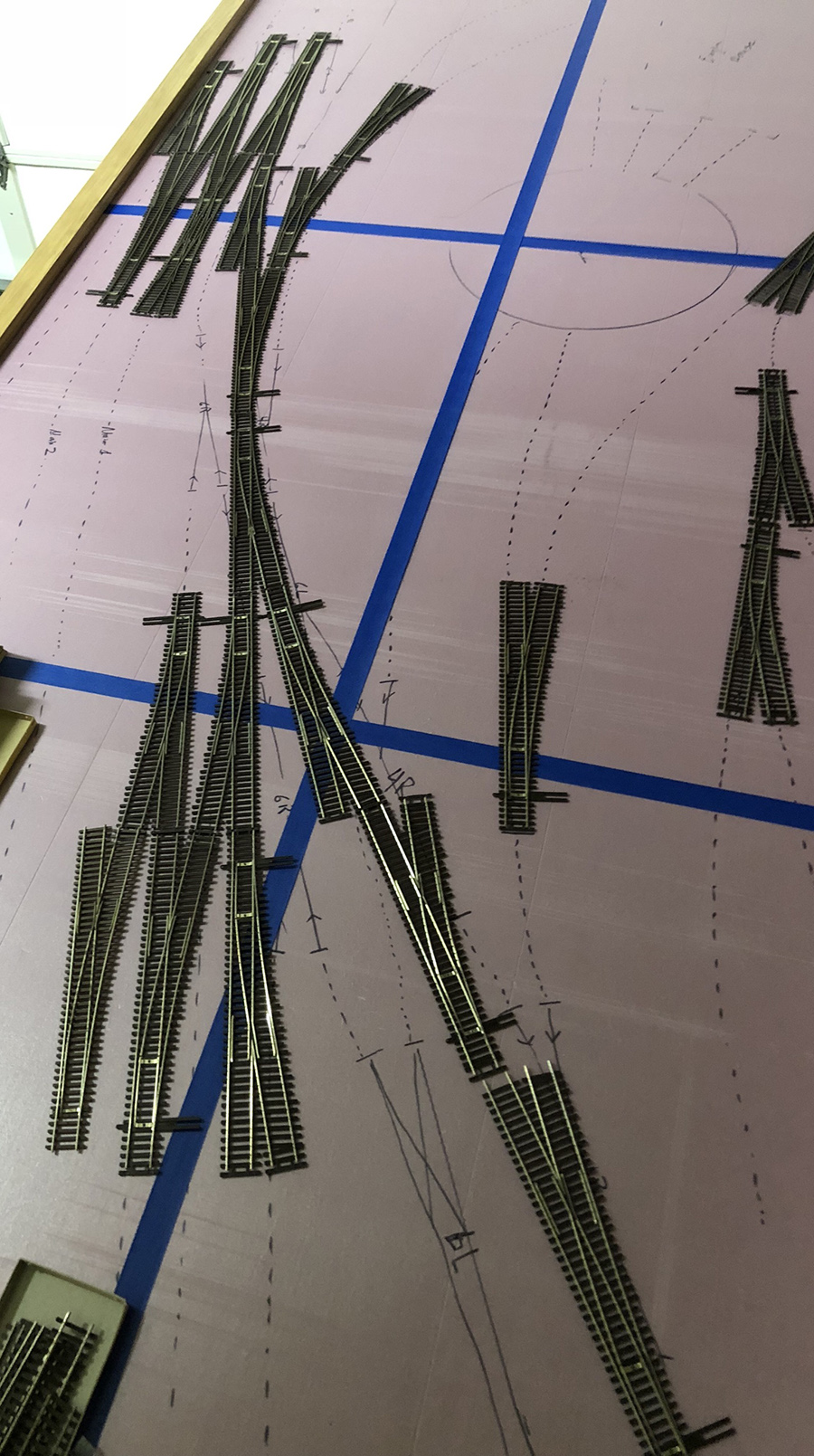
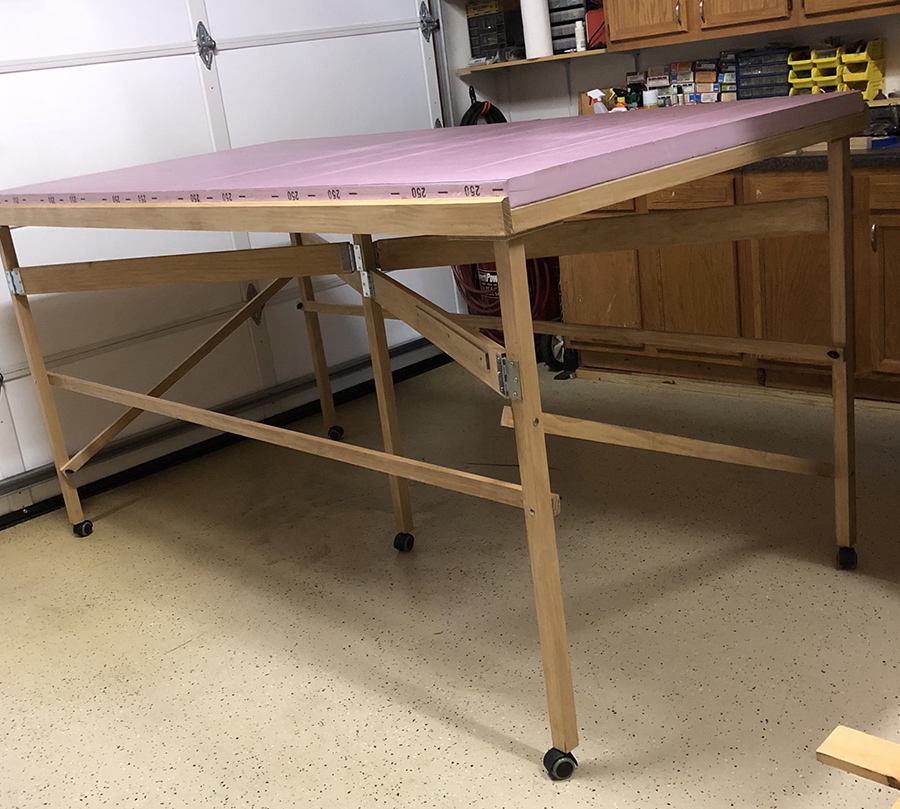
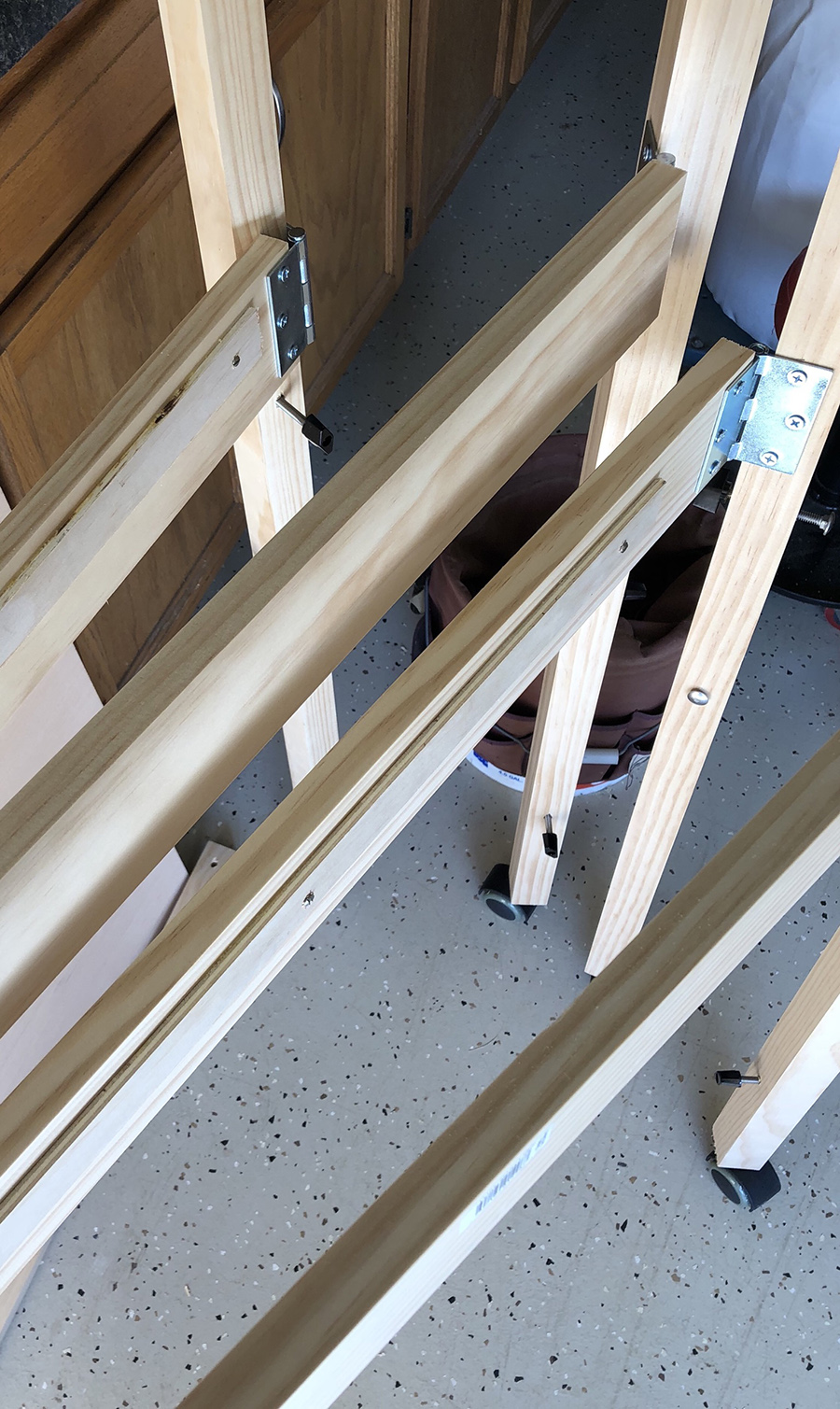
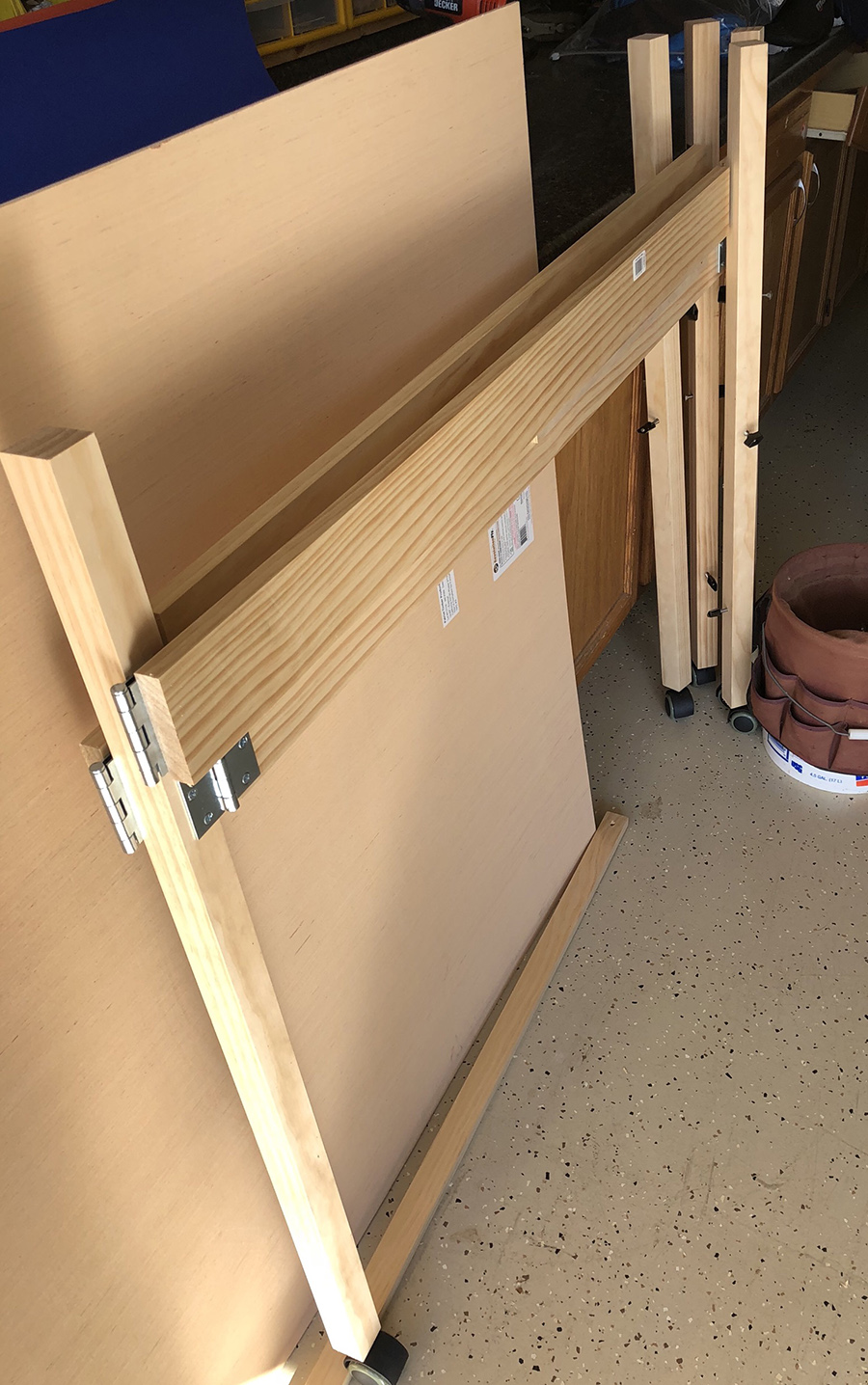
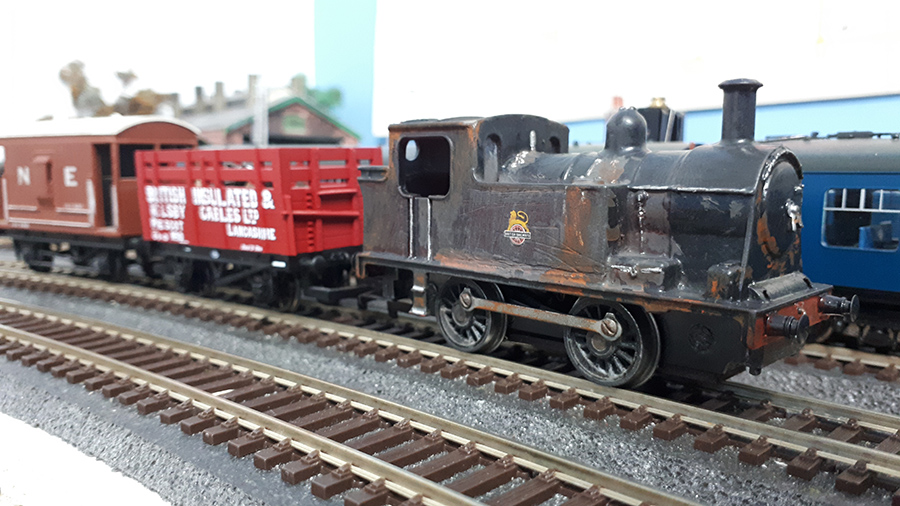


Hi Malcolm, Amazing result. The photo suggests a real live loco, except for one minor detail; is there any chance of further work on the screw heads on the links?
that was looking good
Malcom that really made me smile.
Wonderful bit of writing, even without the wonderful modeling!
HURAY NELLIE!!!!
Great / inspirational. Now I’m going to have to route out my “bin” and see what “magic” may be lurking in there as well – just in time for Christmas.
Thanks,
K
Hey, Bill, that’s some fine looking benchwork! It’s great seeing someone take the time to do a beautiful, professional job. Please send more pics as you progress.
And for Malcolm, I love seeing defunct pieces come back to life. I have two brass 4-4-2 Atlantics that aren’t running, and really need TLC. Seeing what you’ve done is making me want to go do some soldering and get them back in service.
Warren, AL, USA
Excellent engineering on the folding table. I would bet your track work will be first class professional too. Trains will run without a glitch.
Nice work on getting Nellie to operate again too. I notice the wheels are very wide. Will that cause problems on modern points?
I really enjoy seeing equipment brought back from the scrap heap and put back in service! Really like the weathering you did on Nellie. Great to see her show her years of service ! Nicely done!
Bill in Virginia
Bill, how about a video showing how you fold up the legs of your layout?
Bob C
Bill, I really like the folding legs idea a lot…
…it cannot get better than that… money can buy anything but the memories that go with your engine! Perception is always required to ‘see’ reality in the models… but that’s obviously built-in to it.
At least you are using some nice wood, namely select pine, but wonder why the pink foam, unless that is just temporary to layout the tracks. I would use at least 1/2″ plywood, and perhaps take 1/3 select pine and double up on the legs, making sure you glue them together opposite grain pattern for added strength to lessen wood warp or cupping. I gather for the present this is just a work surface for now. If possible, see if you could benefit using #10 switches should the shorter switches prove to tight should you have a need. They do make kits to build your own. For ballast, many modelers use too big a ballast, and should use N-scale rock. Rock on real railroads is 1-1/2″ size and if you scale that down to 1/87th, that is 0.0172″ diameter.
Billy how in the heck are you going to control all those turnouts? It’s mine boggling.Can’t wait to see the outcome.
Robert B
@2:43pm
No, it shouldn’t cause any issues – my father and I have two ‘Nellies’ running on Peco code 100 track (and I’ve put a chassis from a 3rd one into an Airfix autocoach to make a steam railmotor!). If there are any issues, I think the wheels can be eased out slightly.
Great work
Hi all
Thanks for the comments on my Nellie! ( never thought I’d be writing that sentence!)
A couple of answers. I will probably get round to replacing the obvious screws with pins to be more prototypical. Although I do have loads of work to do elsewhere on the layout.
I will do another article soon on my layout to share with you all.
The wider Hornby wheels work with code 100 track but not code 75. I have found the back to backs were narrower on Hornby/triang track but in most instances setting them to the modern standard is easy as they will ease out on the axles and go through points (turnouts) just fine.
Oddly enough even though Nellie is a very short wheelbase she doesn’t stall on the frogs whereas some of my other older locos do.
So to everyone who has an old loco in a parts bin somewhere, go ahead and have a go at bringing it back, the worst that can happen is you practice an old skill or better still try out a new one.
Malcolm
North Wales
Holy smokes! That’s more switches than the New York subway system! I am most interested in seeing how this goes. An engine and car may enter this maze, and never come out!
BUT….looks like fun, and better than a video game!
Jim
Well worth the effort Malcolm;now for a plea for advice I have a 00 3 rail Hornby Dublo Duchess of Montrose, and one of the rod has come apart from the driving wheel how do I get the pin to stay in the hole? I thought that I would ask before using solder, over size screw (with possible permanent damage), or super-glue! Looking forward to a reply to enable to use the engine again.
Peter
Hi it’s Bill
I took Bobs suggestion and I created a video showing the bench work and posted it on YouTube. I sent Al the link so hopefully it can be posted lol. It was fun and my first attempt. If you watch you’ll see I did build it lite on purpose.
There are a lot of switches on this section – a total of 23. I love riding Amtrack and in Washington and Philadelphia I go through a spaghetti bowl of switches every time I ride and just love how it looks. So I’m hoping to do something similar in HO Scale. Since I’m the one running the show I’ll only have a few blocks for DC operation. In the future I may try DCC. I’ll use manual ground throws to change direction and micro switches to change polarity. I have an idea on how I want to set those up and will show more after I put in place and it works. I’ll use a tethered walk around throttle so I can get all around the layout.
Thanks!
Bill in Virginia
This is what modeling is all about.
Hi Peter
It really depends on the pin. On some coupling rods the pin doesn’t spin in the rod it is meant to spin in the wheel and so is actually loose in the wheel. I have a number of the old Triang locos where only the central screw is fixed to the wheel and the two end pins just float. The requirement here is that the coupling roads are arrow straight. On the other hand if the pin turns in the coupling rod then superglue could work just fine.
Regards
Mal
I like to see the Roundhouse & Turntable when finished. It is seldom that anyone focuses on their Turntables and its controls.
What is the recommended height of the layout above the floor? I was told between 40” and 44”! What is the reasoning behind the high height 44” in lieu of 30” to 36” high?
Thanks, Danny
I think everyone has a recommended height but really it depends upon what works for you. If you enjoy sitting and watching trains run then lower is fine. If you stand you may want the benchwork higher so you are not staring down at the railroad. For me personally I like about 44inches or so. I’m tall and I want to stand and see things as though I’m in a building looking down not in an airplane flying over.
yeeow Malcolm
great rebirth of the old loco
one man’s junk…another man’s treasure
keep em runnin fellas
Love the folding table base. Assuming the table top is 4 x 8, would love to see detailed base measurements.
Excellent table base. Assuming a 4’ x 8’ table top. How about folding leg dimensions.
This is Bill. I’ll put together a drawing showing key dimensions and materials. I’ll send it in with an update of how my switching layout is coming in the near future.